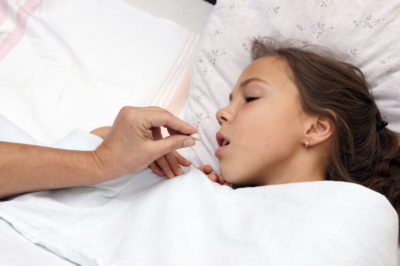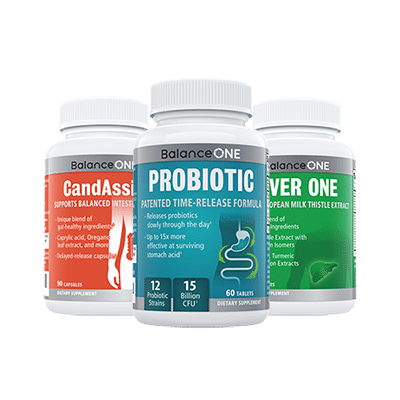Are Antibiotics Overused In Children?

When your child is ill, you naturally want him or her to get better as quickly as possible. After all, few things can make a parent feel as helpless as a child struggling to breathe, crying from pain, burning up with a fever, or just generally feeling miserable. Antibiotics often seem like the perfect solution but, as more and more studies show, they can sometimes do more harm than good.
Antibiotics may be one of the most important advances in medicine – an easy way to treat bacterial infections that could be fatal if left untreated. These wonder drugs work by either killing bacteria or inhibiting their growth, but they come with unintended consequences. Most importantly, they seriously disturb the balance of your gut flora, often leading to Candida overgrowth or other gut conditions, and almost always weakening your immunity.
Table Of Contents
How Often Are Antibiotics Prescribed?
A study reported by the American Academy of Pediatrics showed that doctors prescribed antibiotics about once every five times patients visited their offices. [1] In fact, they discovered that around 10 million unnecessary prescriptions for antibiotics are written each year – an incredible number.
In Britain, the situation isn’t much better: According to the NHS, the average British child has taken ten courses of antibiotics by the time he or she turns 16. Most of these prescriptions are likely unnecessary. In many of these cases, the use of antibiotics is completely unnecessary and won’t have any effect at all in treating the illness. For example, antibiotics do not kill viruses, but they are regularly prescribed by doctors for viral infections. If your doctor prescribes an antibiotic for the flu, you should question their reason for doing so. Many doctors prescribe antibiotics because of pressure from their patients, or because they feel they should be proactively doing something, rather than recommending a more appropriate treatment like rest and hydration.
We are just starting to understand the short- and long-term effects that antibiotics can have on the immune system. Their overuse in both children and adults has serious consequences for public health.
Why Is The Overuse Of Antibiotics A Problem?
While antibiotics are certainly important and have saved millions of lives, using them unnecessarily can have some very detrimental effects on your health. The fact is that not all bacteria are bad, and in fact some are actually essential to keep us healthy. However, antibiotics don’t discriminate between these ‘good bacteria’ and the pathogenic ones they’re supposed to kill.
When you take a course of strong antibiotics, there are typically some side effects. For example, your digestive system probably doesn’t work like it should, and you become more susceptible to fungal infections such as thrush. This is because the antibiotics kill the good bacteria that help maintain a proper balance of flora in your body. When that balance is disturbed, pathogenic fungi and bacteria (such as Candida albicans, Clostridium difficile, and others) are able to proliferate.
Every time you take antibiotics, you run the risk of making this imbalance just a little worse. Several studies have shown a link between the use of antibiotics and an increased risk of diarrhea, irritable bowel syndrome, and Crohn’s disease.
A recent study by the American Centers for Disease Control looked at cases of Clostridium difficile infections in children.[2] These infections cause severe diarrhea and can even be fatal. The researchers interviewed the parents of children suffering from Clostridium difficile infections and found that 73% of these children had used antibiotics in the previous twelve weeks. In most cases these antibiotics were prescribed for respiratory or ear infections, and weren’t necessary.
Another recent study showed that the presence of Candida albicans significantly changed the way in which the gut flora were reassembled after a course of antibiotics. [3] Researchers noted that Candida albicans was able to effectively colonize the gut after the antibiotics. It also managed to change the composition of the remaining bacteria, reducing the levels of Lactobacillae bacteria that form an important part of our immune system.
Even more worrying than antibiotics’ side effects and the increased risk of problems such as Clostridium difficile infections, is the emergence of drug-resistant bacteria. When bacteria are exposed to antibiotics in dosages too small to kill all of them, the surviving ones mutate and develop a resistance to these antibiotics. They then require stronger antibiotics to kill them, so in effect, they become superbugs.
The main factors that have caused superbugs are the prescription of antibiotics when they’re not needed, the prescription of the wrong antibiotics for specific infections, and patients not completing the full course of antibiotics when they do need to take them. Poor hygiene, for instance not washing your hands properly after having been in contact with a person who carries superbugs, helps these bacteria to spread.
The World Health Organization has recently called the rise of antibiotic resistance a ‘major threat to public health’. [4] This is because it’s becoming more and more difficult to treat serious diseases such as tuberculosis, E. coli, and Salmonella infections.
Do You Need To Stop Giving Your Child Antibiotics?
With all the information now coming to light about the overuse of antibiotics, it may be tempting to panic and not give your child any antibiotics, ever. However, remember that antibiotics can still save lives. For serious bacterial infections such as pneumonia or meningitis, they are the best form of treatment.
The trick is to use antibiotics only when they’re really needed, and then to use them correctly. Your child most likely won’t need antibiotics for the flu, a cold, a sore throat, or an ear infection, since these are often viral infections. Even when an infection is bacterial in origin, it may be mild enough so that the body’s immune system will fight it off naturally and without the help of antibiotics. Talk to your doctor about the severity of the infection and whether antibiotics are really necessary. A few simple tests may be necessary to determine whether the infection is bacterial or viral in nature and what the best course of treatment will be. You can use over-the-counter or natural remedies for symptoms like a sore throat or blocked nose.
It’s also important not to insist on antibiotics because you think they may be a quick fix. They’re not. It usually takes a couple of days of treatment before you’ll see an improvement in your child’s condition, provided of course that the infection is indeed bacterial. If it isn’t, the antibiotics won’t make any difference.
When your child does need to take a course of antibiotics, taking a good probiotic supplement at the same time can help to maintain a healthy gut and avoid some of the side effects often associated with antibiotics. If your child doesn’t feel better by the end of the course, go back to your doctor – don’t be tempted to use leftover antibiotics that might be lying around. If your child feels better before the course of antibiotics end, you can stop the course. The old advice (to always finish your course of antibiotics) has been shown to be outdated and incorrect.
There are some basics that you also need to remember when caring for a sick child. Some of the best things you can do to ensure a speedy recovery are to make sure he or she gets plenty of rest, drinks enough fluids, and eats nutritious meals. Most importantly, remember that prevention is better than cure. Encourage all family members to wash their hands regularly, especially after coming into contact with someone who is sick. Keep their immune systems strong with a healthy, anti-inflammatory diet that is low in added sugars, and teach them to take responsibility for their own health.
Research & Further Reading
1. American Academy of Pediatrics (2013). “American Academy of Pediatrics Advises Physicians to Use Antibiotics Judiciously”. http://www.aap.org/en-us/about-the-aap/aap-press-room/pages/American-Academy-of-Pediatrics-Advises-Physicians-to-Use-Antibiotics-Judiciously.aspx.
2. CDC (2013). “Severe diarrheal illness in children linked to antibiotics prescribed in doctor’s offices”. http://www.cdc.gov/media/releases/2014/p0307-severe-diarrheal-illness.html.
3. Downward et al. (2013). “Modulation of Post-Antibiotic Bacterial Community Reassembly and Host Response by Candida albicans”. http://www.nature.com/srep/2013/130712/srep02191/full/srep02191.html.
4. WHO (2014). “WHO’s first global report on antibiotic resistance reveals serious, worldwide threat to public health”. http://www.who.int/mediacentre/news/releases/2014/amr-report/en/.

3-Month Candida Elimination Kit Start Your 3-month Candida Cleanse
This Candida Kit contains all the supplements recommended on the Candida Diet:
- LIVER ONE to process and remove the toxins created by Candida.
- CANDASSIST to inhibit and weaken the Candida colonies in your gut.
- PROBIOTIC to replace the Candida yeast with probiotic bacteria.
Plus... the CANDIDA DIET RECIPE BOOK with 50+ low-sugar recipes


I already bought your books and I am on the candida diet. I have already started to feel better.
I enjoy reading your letters and want to say thank you!
Kind regards, Sonja